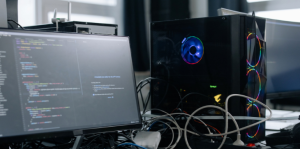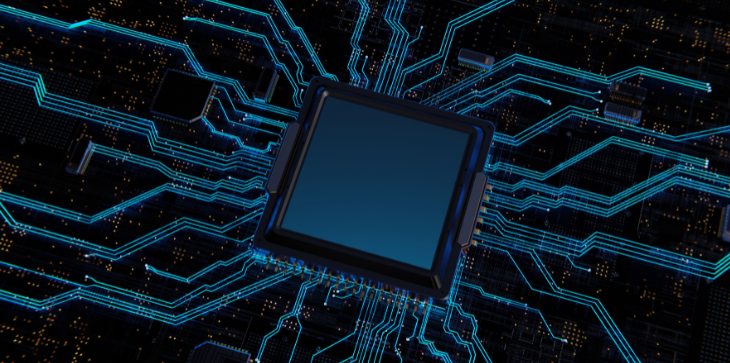For decades, the computing industry has been on an insatiable quest for higher performance, faster processing speeds, and lower power consumption. Traditional computing architectures, however, are struggling to keep up with the relentless demands of artificial intelligence (AI), edge computing, and the Internet of Things (IoT). Enter neuromorphic computing—an emerging field poised to redefine energy-efficient computation by mimicking the biological processes of the human brain.

The Need for Energy Efficiency in Computing
Power consumption has become one of the biggest bottlenecks in modern computing. Data centers alone consume an estimated 1% of global electricity, a number that continues to rise with the exponential growth of AI applications. Traditional von Neumann architectures, where data constantly shuttles between memory and processing units, are inherently inefficient, leading to high energy costs and thermal management challenges.
Neuromorphic (NeuroPHC) computing offers a radical departure from this model. By replicating the way neurons and synapses process information, neuromorphic chips promise to deliver substantial energy savings while maintaining high computational power—making them a game-changer in fields ranging from robotics to autonomous vehicles and smart sensors.
What Makes NeuroPHC Chips Different?
Unlike conventional processors, which process instructions sequentially, neuromorphic chips operate asynchronously, much like the human brain. They use spiking neural networks (SNNs) to transmit data efficiently, allowing computations to happen only when necessary, drastically reducing power consumption.
Key characteristics that set neuromorphic chips apart include:
- Event-Driven Processing: Unlike standard CPUs or GPUs that constantly process data, neuromorphic chips only activate when an input signal is received, mirroring the way biological neurons fire.
- In-Memory Computing: Traditional architectures suffer from the von Neumann bottleneck, where data movement between memory and processing units consumes significant power. Neuromorphic chips integrate memory and computation, reducing latency and improving efficiency.
- Massive Parallelism: With thousands or even millions of artificial neurons working in parallel, neuromorphic systems can handle complex computations with minimal energy use.
Industry Leaders Driving NeuroPHC Innovation
Tech giants and startups alike are investing heavily in neuromorphic computing, recognizing its potential to revolutionize the AI landscape.
- Intel’s Loihi 2
Intel has been at the forefront of neuromorphic research with its Loihi 2 chip, designed to accelerate AI workloads while consuming far less power than traditional architectures. It features over one million artificial neurons and is particularly suited for applications like adaptive learning, robotics, and cybersecurity. - IBM’s TrueNorth
One of the earliest players in neuromorphic computing, IBM’s TrueNorth chip boasts over one million neurons and 256 million synapses, operating at just 70 milliwatts—far lower than standard AI chips. - BrainChip’s Akida
This Australian company has developed a commercial neuromorphic processor capable of ultra-low power processing, making it ideal for edge AI applications like smart security cameras and wearable devices.
The Role of NeuroPHC Chips in AI and Edge Computing
AI models, particularly deep learning networks, require immense computational power, often running on power-hungry GPUs. Neuromorphic chips, however, are designed to perform AI inference tasks with a fraction of the energy, making them well-suited for real-time applications.
One area where neuromorphic computing excels is edge computing—processing data closer to the source rather than relying on cloud-based servers. With AI applications expanding into autonomous vehicles, industrial IoT, and smart cities, the ability to process information locally and efficiently is becoming critical. Neuromorphic chips enable real-time decision-making without draining battery life or requiring constant cloud connectivity.
Despite their promise, neuromorphic chips face several hurdles before they can achieve mainstream adoption:
- Programming Complexity
Traditional software development is built around von Neumann architectures, making it challenging to create neuromorphic-friendly algorithms. - Hardware Scalability
While neuromorphic chips are highly efficient, scaling them to match the computing power of GPUs remains a challenge. - Market Readiness
Many industries are still in the early stages of understanding how to integrate neuromorphic technology into existing workflows.
However, with continued research and development, these challenges are expected to be addressed, paving the way for wider adoption.
As AI models grow more complex, neuromorphic computing will be essential. Experts predict it will complement CPUs and GPUs for efficiency
In the next five to ten years, we can expect neuromorphic chips to play a pivotal role in:
- AI-powered IoT devices that operate on minimal energy, enabling smarter homes and cities.
- Advanced robotics capable of real-time learning and adaptation.
- Medical applications, such as brain-computer interfaces and AI-assisted diagnostics.
NeuroPHC chips represent a paradigm shift in computing, offering unprecedented energy efficiency and processing capabilities. As AI demand increases, brain-inspired processors will enable smarter, faster, and more sustainable computing solutions, playing a crucial role





